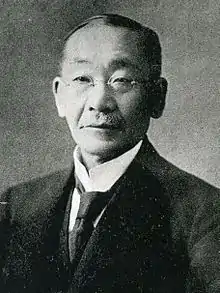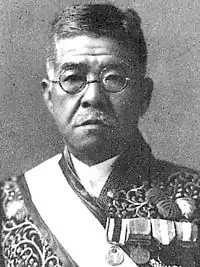1936 Japanese general election
General elections were held in Japan on 20 February 1936.[1] Rikken Minseitō emerged as the largest party in the House of Representatives, winning 205 of the 466 seats. Following the elections, an attempted coup took place on 26 February.
| |||||||||||||||||||||||||
All 466 seats to the House of Representatives of Japan 234 seats needed for a majority | |||||||||||||||||||||||||
|---|---|---|---|---|---|---|---|---|---|---|---|---|---|---|---|---|---|---|---|---|---|---|---|---|---|
| |||||||||||||||||||||||||
 House of Representatives conformation | |||||||||||||||||||||||||
| |||||||||||||||||||||||||
 |
|---|
| This article is part of a series on the politics and government of Japan |
|
|
Electoral system
The 466 members of the House of Representatives were elected from multi-member constituencies with between three and five seats.[2]
Results
| Party | Votes | % | Seats | +/– |
|---|---|---|---|---|
| Rikken Minseitō | 4,444,413 | 39.9 | 205 | +59 |
| Rikken Seiyūkai | 4,188,029 | 37.6 | 174 | –127 |
| Shōwakai | 531,772 | 4.8 | 20 | New |
| Shakai Taishūtō | 518,844 | 4.7 | 18 | New |
| Kokumin Dōmei | 421,632 | 3.8 | 15 | New |
| Others | 1,027,988 | 9.2 | 34 | +22 |
| Invalid/blank votes | 116,886 | – | – | – |
| Total | 11,249,564 | 100 | 466 | 0 |
| Registered voters/turnout | 14,304,546 | 78.6 | – | – |
| Source: Mackie & Rose, Voice Japan | ||||
References
- Thomas T Mackie & Richard Rose (1991) The International Almanac of Electoral History, Macmillan, p281
- Mackie & Rose, p276
This article is issued from Wikipedia. The text is licensed under Creative Commons - Attribution - Sharealike. Additional terms may apply for the media files.

